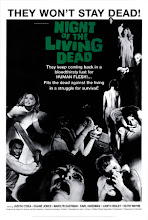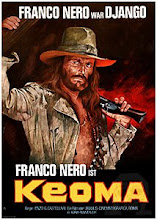
How To Undress In Front Of Your Husband
aka How To Undress
Director/Writer Dwain Esper
Cast Elaine Barrie Barrymore (herself), Trixie Friganza (Trixie), Hal Richardson (Peeping Tom), Albert Van Antwerp (Narrator)
Sinister Menace
aka Sinister Harvest
“Presenter”/Writer Dwain Esper
Narcotic
aka Narcotic Racket
Directors Dwain Esper, [uncredited] Vival Sodar't Writers A.J. Karnopp, Hildegarde Stadie
Cast Harry Cording (Dr. William G. Davis), Joan Dix (Mrs. Davies), Patricia Farley (Mae), Jean Lacey (
 Tonight we revisit an old friend of Schlock Treatment's, the carnival huckster Dwain Esper, whose sleazy roadshow anti-classics – Marijuana The Weed With Roots In Hell, Maniac, The Strange Love Life Of Adolph Hitler, to name a few - were the filmic equivalent of Snake Oil. Esper's films, both as director and distributor, were of the salacious kind, lurid exposes on the darker impulses of his prim yet prurient audiences masquerading as morality plays. Vice, madness, addiction and damnation were all four-walled across Depression-era America by Esper's one-man caravan, and he made a tidy profit throughout the Thirties and into the Forties as an independent filmmaker SO independent, he could be described as outstanding in a field of one.
Tonight we revisit an old friend of Schlock Treatment's, the carnival huckster Dwain Esper, whose sleazy roadshow anti-classics – Marijuana The Weed With Roots In Hell, Maniac, The Strange Love Life Of Adolph Hitler, to name a few - were the filmic equivalent of Snake Oil. Esper's films, both as director and distributor, were of the salacious kind, lurid exposes on the darker impulses of his prim yet prurient audiences masquerading as morality plays. Vice, madness, addiction and damnation were all four-walled across Depression-era America by Esper's one-man caravan, and he made a tidy profit throughout the Thirties and into the Forties as an independent filmmaker SO independent, he could be described as outstanding in a field of one.

 The second short takes the word “hateful” to another plateau. An early example of a Mondo Cane-style shockumentary, Sinister Menace from 1930, purports to be Egyptian government footage of the narcotics trade, with a new foaming-at-the-mouth tirade on the evils of drugs that's 100 percent pure vintage Esper. Tales abound of hash smuggled into Egypt on the backs of camels, and of evil pushers lacing their dope with crushed human skulls. These are NOT actors, the film reminds us, “just fellow human beings”, and thus starts the camera's journey along the trail of human wreckage captured, no doubt, by an Egyptian Esper clone. Haggard, haunted faces in hideous closeup, shaking and crawling with flies, are reminiscent of images from Nazi propaganda films such as The Eternal Jew, and as America's War on Drugs was just starting to warm up in the early Thirties, Esper's own propaganda is a similarly cruel and inhuman piece that would warm the cockles of Joseph Goebels' ice-cold heart.
The second short takes the word “hateful” to another plateau. An early example of a Mondo Cane-style shockumentary, Sinister Menace from 1930, purports to be Egyptian government footage of the narcotics trade, with a new foaming-at-the-mouth tirade on the evils of drugs that's 100 percent pure vintage Esper. Tales abound of hash smuggled into Egypt on the backs of camels, and of evil pushers lacing their dope with crushed human skulls. These are NOT actors, the film reminds us, “just fellow human beings”, and thus starts the camera's journey along the trail of human wreckage captured, no doubt, by an Egyptian Esper clone. Haggard, haunted faces in hideous closeup, shaking and crawling with flies, are reminiscent of images from Nazi propaganda films such as The Eternal Jew, and as America's War on Drugs was just starting to warm up in the early Thirties, Esper's own propaganda is a similarly cruel and inhuman piece that would warm the cockles of Joseph Goebels' ice-cold heart.
 And so to our feature tonight, which proves once and for all that Dwain Esper was the Ed Wood Jr of his generation of roadshow pioneers, and that Narcotic from 1933 is the Glen Or Glenda of the Drugsploitation genre. A bold claim, I hear one or two of you declare, but just wait for Narcotic to unfold. On the surface it's the confessions of one Dr William G. Davis, promising doctor with his own Free Clinic, loving wife, and a caring friend in his former classmate Mr Wu (played with squinted reverence by Caucasian actor and Esper's assistant on Maniac, J. Stuart Blackton Jr!). Wu introduces Davis in garbled Confucian to one of Chinatown's many opium dens and to the pipe's dangerous charms, but warns him that any defect in character will allow the drug to take hold. Before the smoke clears Davis has his own home opium den, is selling tiger fat on street corners as the miracle ointment Wang Fang, and cavorting with socialites and underwear-clad showgirls in a recreation of a dope party which eclipses any scene from Reefer Madness. Davis produces a veritable all-you-can-ingest pharmacopia, from “C” to “H”, snorting AND main-lining (says one girl, “It takes a needle for me to get a bang!”) and some jazz cigarettes for an extra ding or ping or pop, or whatever Harlem lingo was hip that season.
And so to our feature tonight, which proves once and for all that Dwain Esper was the Ed Wood Jr of his generation of roadshow pioneers, and that Narcotic from 1933 is the Glen Or Glenda of the Drugsploitation genre. A bold claim, I hear one or two of you declare, but just wait for Narcotic to unfold. On the surface it's the confessions of one Dr William G. Davis, promising doctor with his own Free Clinic, loving wife, and a caring friend in his former classmate Mr Wu (played with squinted reverence by Caucasian actor and Esper's assistant on Maniac, J. Stuart Blackton Jr!). Wu introduces Davis in garbled Confucian to one of Chinatown's many opium dens and to the pipe's dangerous charms, but warns him that any defect in character will allow the drug to take hold. Before the smoke clears Davis has his own home opium den, is selling tiger fat on street corners as the miracle ointment Wang Fang, and cavorting with socialites and underwear-clad showgirls in a recreation of a dope party which eclipses any scene from Reefer Madness. Davis produces a veritable all-you-can-ingest pharmacopia, from “C” to “H”, snorting AND main-lining (says one girl, “It takes a needle for me to get a bang!”) and some jazz cigarettes for an extra ding or ping or pop, or whatever Harlem lingo was hip that season.
 Sadly for
Sadly for





















































































No comments:
Post a Comment